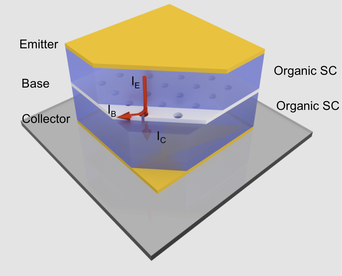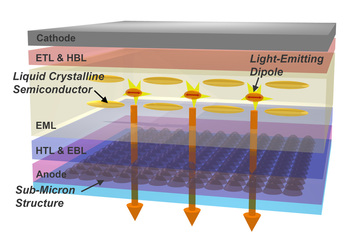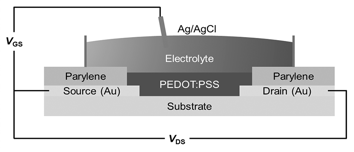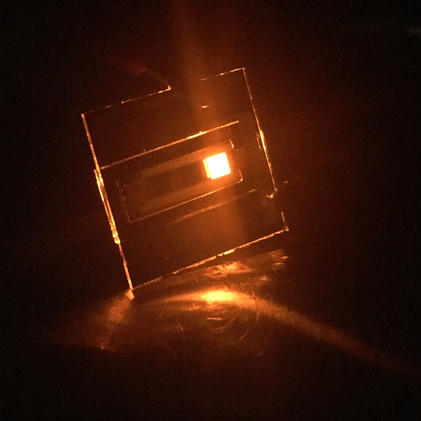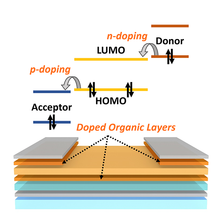|
Organic Permeable Base Transistors
Organic Permeable-Base Transistors (OPBTs) have shown excellent performance in the past. However, their precise working mechanism is largely unknown, which makes it difficult to optimize these devices. Here, we want to clarify the microscopic details of the switching mechanism observed in these devices and propose ways to improve the performance of OPBTs further. The project receives funding from the NSF (Award No 1639073). |
|
Liquid-Crystalline Light-Emitting Diodes
Order in organic layers decisively influences emission in organic microcavities and organic light-emitting diodes (OLEDs). For example, bi-refringence in the emission layer can shape the emission pattern of OLEDs. The orientation of the emission dipole determines coupling to surface plasmons, which is a major loss channel of OLEDs. Finally, an increased charge mobility due to an increased order in the emission layer can lead to lower ohmic losses, wider recombination zones, and thus higher efficiency.
Here, we want to use liquid-crystalline semiconductors to induce order in organic layers and to study the influence of order on emission in organic microcavities. The project receives funding from Kent State internal PostDoc program. |
|
Organic Electrochemical Transistors
Organic Electrochemical Transistors are the perfect link between biology and microelectronics. They operate in aqueous environments, are flexible and bio-compatible, and translate ionic into electronic currents. However, the precise interplay between ion movement and current in the organic semiconductor presents a challenge for modeling these devices. We intend to develop analytical and numerical models that quantitatively describe the device behavior and to derive design rules for highly efficient electrochemical transistors.
This project is supported by the National Science Foundation. |
|
Organic Light-Emitting Transistors
In this project, combine the two most fundamental devices an organic display is composed of: organic transistors and organic light emitting diodes. Vertical organic transistors are used, which will increase the efficiency and complexity of organic displays. However, despite the excellent prospects of these devices, their fundamental working principle is only poorly understood.
By a combined experimental and theoretical approach with our partner Nir Tessler from Technion, Haifa, we clarify the operation mode of these devices, which will lead to an increase in efficiency and allows for a significant advances in the field of organic displays. We will develop a quantitative model of the device, which will help to design and optimize flexible organic displays in the future. This project is supported by the Binational Science Foundation (Award No 2014396) |
|
Doped Organic Transistors
Electrically doping organic transistors can increase their performance, makes these transistors more reliable, and provides a new dimension for the design of advanced transistor concepts. Here, we study the influence of doping on transistor performance and develop new transistor devices such as inversion or tunnel transistors.
This project receives funding from the NSF (Award No 1709479). |
